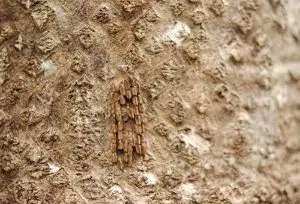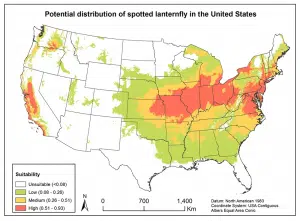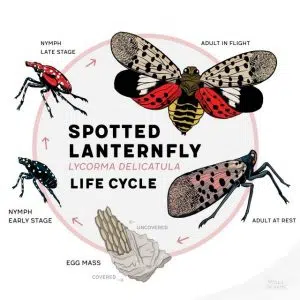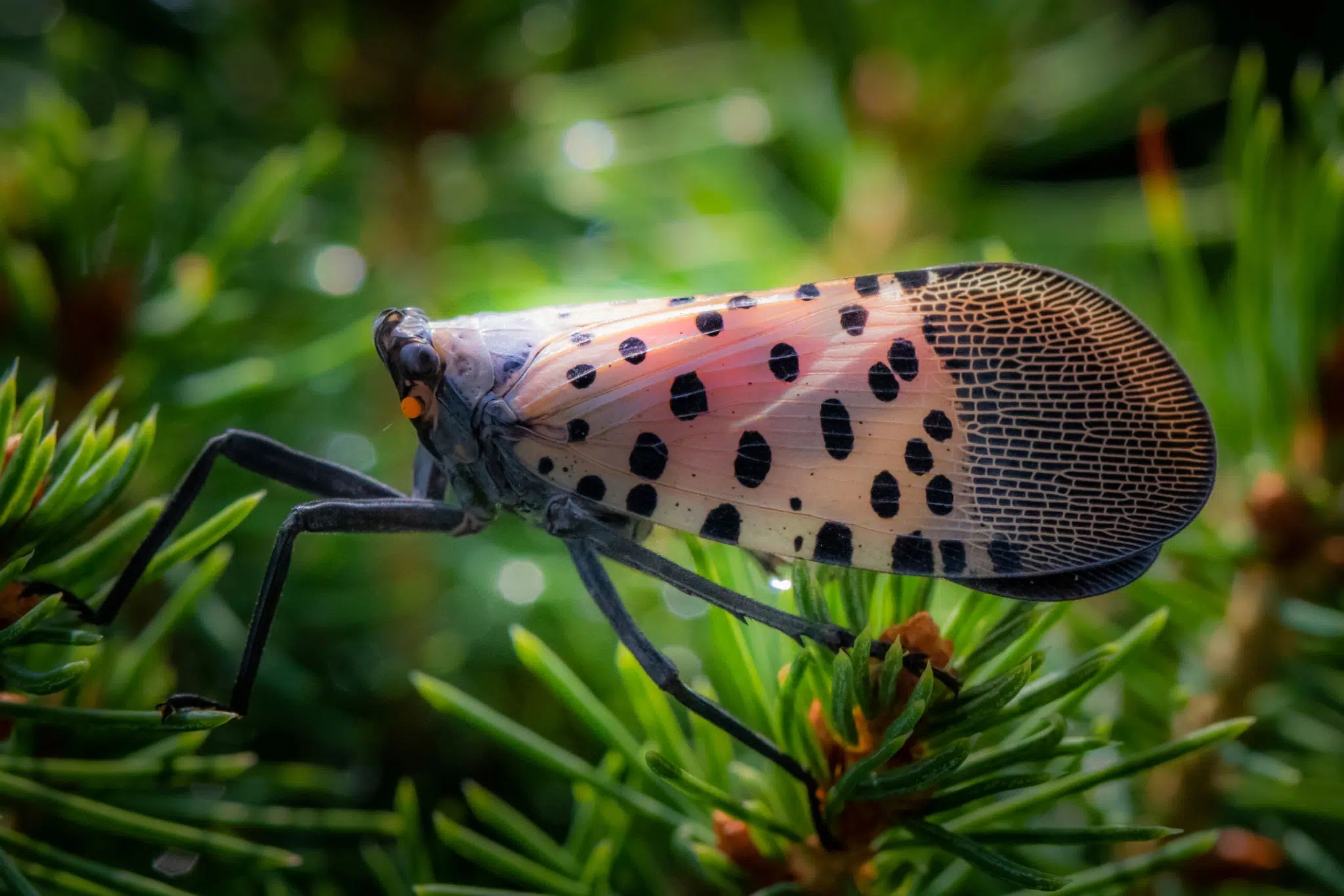By GAGE WILSON
Glasgow News 1
In 2014 a farm worker in Pennsylvania was inspecting their crop, going through the orchard monitoring growth and looking for any abnormalities. The worker noticed what almost looked like a butterfly, with a set of brightly colored wings and very distinctive spots with shades of red and pink. Unknowingly, the worker had stumbled on an alien to North America, as this was the first reported sighting of an invasive species, the Spotted Lanternfly.
Originally from Asia, the lanternfly primarily feeds off of the “Tree of Heaven” or Chinese Sumac (which itself is an invasive species). It’s generally believed that the lanternfly came to the U.S on one of these trees and has since exploded in population, affecting multiple states and a diverse menu of trees and crops.

The “Tree of Heaven” or Chinese Sumac.(Photo courtesy of the USDA).
According to Dr. Jonathan Larson, assistant professor of extension entomology with the University of Kentucky, “Female lanterflies will lay their clutch on almost anything, vehicles, tractors, even wood pallets. This has contributed to their spread tremendously as the eggs are kept in place by a secretion that acts as an adhesive and, when dry, is almost indistinguishable from a smear of mud or clay.”
With mating occurring in the late summer and early fall, these eggs will normally hatch anytime between May and June

A clutch of lanternfly eggs. (Photo courtesy of the USDA.)
Primarily the lanternflies are found farther north, but have since made steady progress in pushing their boundaries. They’ve moved consistently to the South and West, causing devastation to local plant life. The lanternflies feed and damage a variety of plant species, including “Tree of Heaven”, grapevine, stone fruits (apricot, cherry, nectarine, peach, and plum), and other tree species (apple, oak, pine, poplar, and walnut). Infestations have became so dire in some areas, the logging industry has also been affected. This pest threatens to impact wine production, apple growing, Christmas tree production, hops growers, and the sizable forest industries of Kentucky. As these insects feed, the piercing manner in which they do so causes stress to a plant and can cause death. Although the outcomes of infestations in diverse woodlands settings and natural areas are less clear than in more uniform agricultural and landscape settings, the added drain on trees’ resources that is caused may compound existing tree stress issues and trigger decline in forested ecosystems.
Dr. Larson pointed out that in the areas critically affected quarantine measures have been put in place to help stave off the spread. Pesticides have offered some help to the growing invasion, but the reproduction rate and diversity of locations their eggs may be laid has proved challenging. Some communities have tried introducing predatory bugs, but unfortunately the lanternfly uses aposematism, an anti-predatory strategy that involves the use of chemicals to make the prey as unpalatable as possible. This is found with most brightly colored insects as a way to have predators associate the bright colors with a disgusting taste or toxin.
With these challenges extension offices have been working on a suitable way to combat the species. While a clear solution hasn’t surfaced, research and the development of new tactics are in the works.
“It saddens me to think about the damage this species is capable of and the sooner we can cull their numbers the better we will be,” Dr. Larson said.

A map of the projected spread of the lanterfly.
Like agriculture, tourism is a thriving industry in Kentucky and more specifically Barren County, with tourist traveling to Mammoth Cave National Park from all over the U.S. Some of whom, unwittingly, are carrying with them the pest. While reports of the lanternfly have not made their way to the Barren County Extension Office, “It’s only a matter of time,” Dr. Larson said. “Kentucky is a very hospitable climate for the lanternfly, it’s heavily forested, and with this species we can’t depend on weather. They are highly resistant to dramatic temperature changes.”

The various stages of a lanternflies life. (photo courtesy of the USDA)
As the lanternfly encroaches on Barren County, there are tools to assist in hedging their numbers. The USDA has officially labelled the lanternfly a pest and has issued a “Kill-on-Sight” order. Dr. Larson supports the public fighting back, but does ask that before you squash it, take a picture and report it to reportapest@uky.edu. This allows entomologist to correctly identify the species and determine what actions should be placed in the area.

Comments